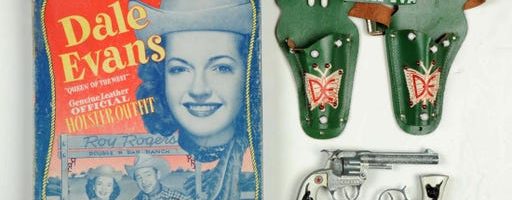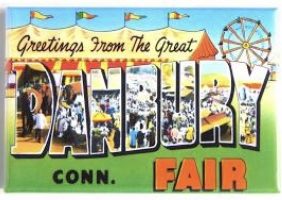I have never held, or even touched, a gun of any kind except for toy guns and water pistols.
Read More
You Can’t Get a Man with a Gun


I have never held, or even touched, a gun of any kind except for toy guns and water pistols.
Read More

Many kids had cap guns in holsters on their hips. These were loaded with red strips which were impregnated with dots of chemicals, and would explode with a loud bang when the trigger was pulled.
Read More

The Camper-Waitress Goes to the Fair
The summer my friend Stephanie and I were too old to be a campers but not old enough to be counselors, we worked as camper-waitresses at a children’s camp in the Connecticut foothills. Stephanie and I went on to become life-long friends, but a friendship cut too short by her cancer death at age 65. (See Aunt Miriam, Diva, and Postcards from a Secret Admirer)
But what fun memories we had of that summer! Our parents had paid partial camp tuition for us to have the privilege of working there – and hard work it was! We had to be at the dining hall bright and early to eat breakfast, then wait on the campers, then clear the tables, and then set-up for lunch.
We had a few hours off and then back to eat our lunch, then wait on the campers, then clear the tables , and then set-up for dinner. And then a few hours off before dinner.
And what did we do with those hours off? I think we spent much of that time flirting with the camper waiters, maybe taking a swim, or drifting aimlessly out on the lake in a canoe, or playing a little tennis, and then back to the dining hall to flirt some more with the camper waiters.
But one day we packed box lunches and went with the campers and counselors to the Danbury Fair. I don’t remember all we saw and did at the fair that day, but I do remember one very special attraction.
Although like any 50s teenager I loved rock ‘n’ roll, I also loved to listen to my parents’ LPs – Gershwin, and Rogers and Hammerstein show tunes, hot and cool jazz, and the Great American Songbook.
And although on that hazy summer day I might not have known she had perfect pitch, or that she had perfected scat, or that years later a music critic would declare her voice too joyous to sing the blues – I knew I was in the presence of a great songstress when Ella Fitzgerald took the stage at the Danbury Fair!
– Dana Susan Lehrman

He aimed and started shooting ... I found the whole practice terrifying.
Read More